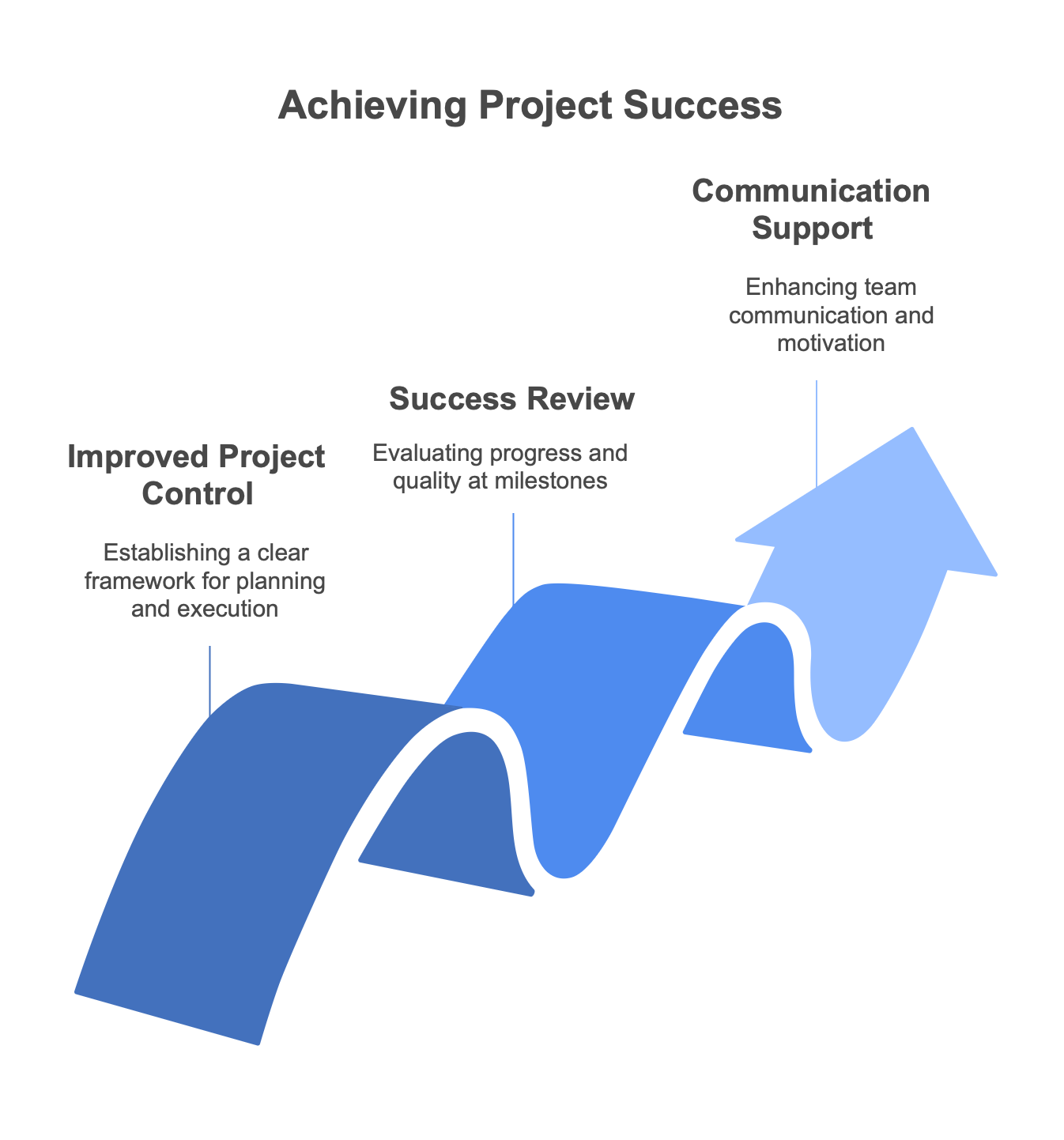How to Successfully Plan Project Phases

Every project goes through different stages from start to finish. It is crucial for project success to define those phases consciously.
The planning of project phases is one of the first and basic management tasks in a project. No matter if your project is big or small, breaking it down into phases helps improve quality and control. Let’s take a look at the two most common methodologies:
As a general definition, a project phase can be understood as a specific timeframe in which predefined activities are executed to reach a project or a subproject goal. Each phase aims at creating a specific deliverable which makes it easy to determine the beginning and end of a project phase.
Some methodologies distinguish between project phases and project management phases. The latter referring to logically connected project management activities which can be executed several times during one project phase. PRINCE2, for example, distinguishes between technical project phases and mangement phases.
Project phases are a concept of traditional management methods but they can also apply to agile methods. The lineal planning of single phases is then combined with the iterative approach of agile.

Many project templates in Merlin Project contain this usage of project phases.
Start your free 30-Day trial today!
The Two Most Common Models to Define Project Phases
There are several ways to divide a project into phases. How many phases you choose to define depends on the project management method you follow. The most common models for project phases are the four phase model and the five phase model.
4 Phase Model
The 4 phase model divides a project into the following phases:
- Project definition
- Project Planning
- Project Execution and Control
- Project Closure
You might come across different terms for the specific phases but the general concept stays the same. Let’s take a closer look at each phase.
Project definition: In the first phase you define your project goal and scope while getting clear on weaknesses and opportunities. Break down the goals into work packages. Conduct a feasibility study and do market research. If you have gathered all information, also conduct a performance audit to asses costs, project scope and schedule. It builds the basis for your decision if the project is viable and should be pursued.
Project Planning: The second phase is about creating a milestone plan and work breakdown structure. You assign and schedule each task and set milestones indicating when a deliverable should be completed or a sub goal should be achieved. You also want to establish quality and risk management as well as workflows, define budgets and brief all team members about the project in general and their specific role.
Project Execution and Control: Now, it’s time to execute the defined tasks and work packages. Controlling plays an important part in this phase as it makes sure you recognize unwanted developments early and implement countermeasures if necessary. Communication between team members is critical to reach the project goal in time and deliver the intended quality.
Project Closure: In the fourth and final project phase, you complete open tasks, acknowledge results and work on lessons learned. Those lessons can be gathered in a final project meeting and should be condensed into a document which serves all project managers as a source for future planning.
5 Phase Model
If you structure a project based on project management processes you end up with five phases. Sometimes they are referred to as project groups because they are not necessarily completed one after the other but partly they have to be repeated to achieve the desired outcome or finish a sub project.
Some of the most established project management associations advocate for this methodology. The Project Management Institute for example recommends the five phases model in its PMBoK Guide:
- Conception & Initiation
- Definition & Planning
- Launch or Execution
- Performance & Control
- Project Close
The main difference to the four phase model is that controlling is granted its own phase whereas in the 4 phase model it is part of the execution.
Why it Is Important to Define Project Phases
Project phases are not only a common theoretical concept but have great practical value.

1. Improved project control
If a project is in its early stages, defining project phases can be a good preparation for developing a project schedule in a gantt chart. With the framework of phases in mind, it is often easier to create a realistic timeline.
Projects are build of lots of small and big tasks and work packages. It is hardly possible to grasp all necessary work at once. Breaking a project down into phases, reduces complexity. The project remains the same, but you can focus now on the work of one phase at a time.
Not only project managers value this modular approach, it greatly simplifies the work of partners and stakeholders who are able to better plan their jobs.
2. Success review
Each project phase usually ends with a milestone. On this specific date, the team reviews if the goal of the phase has been achieved and assesses the overall progress.
Often, milestones are also the dates on which the client or steering committee looks at the project status. This provides additional motivation for the project team to complete results by these deadlines.
Besides, milestones serve as point of reference to evaluate the quality of the results so far and to make corrections if necessary. In doing regular reviews, you recognize problems early rather than at the end of the project which reduces the amount of potential damage.
3. Communication support
It is also important for the entire team to have an overview of the project status at all times. A graphical representation of the project phases is well suited here so that all participants know how to place their own work in the context of the project. A visualization of the project progress can be brought to the wall as orientation and communication support during meetings.
Being able to see the progress of the project visually at any time not only makes it easier to communicate clearly and efficiently, but is also an effective motivation for the entire project team.
Conclusion
Dividing a project into different phases is a simple but effective technique to gain clarity of the viability of a project and next steps. Project phases help to reduce complexity and focus on what is really important while enhancing motivation and productivity.
There are several models of structuring a project in project phases but all methodologies agree on one thing: Using project phases as planning tool is essential to achieve project success.

